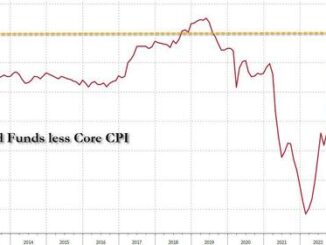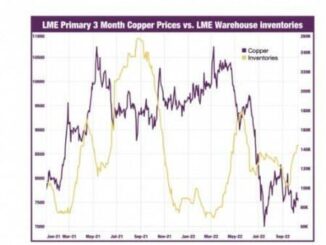
Over the past 25 years, the yield curve predicted 4 business-cycle recessions, two of which didn’t come. So we handle it with care.
By Wolf Richter for WOLF STREET.
Following the jobs report on Friday that showed job creation had deteriorated from “decent” to “weak,” yields dropped across the board, except for the 30-year yield, which ticked up. Yields fell the most for 1-year maturities (-11 basis points) and for 2-year maturities (-9 basis points):
1-month yield: -2 bps to 5.28%
3-month yield: -2 bps to 5.13%;
1-year yield: -11 bps to 4.10%
2-year yield: -9 bps to 3.66%
10-year yield: -1 bp to 3.72%
30-year yield: +1 bp to 4.03%
Yields are now predicting a series of rate cuts by the Fed whose policy rates for now remain in a range of 5.25% and 5.5%.
The chart below shows the yields from 1-month to 30-year yields, on Friday September 6 (red) and on July 23 (blue). The green arrows and numbers indicate how many basis points (bps) yields dropped between those two dates, and that they dropped a lot more for 1-year and 2-year maturities than for 10-year maturities.
The 2-year yield fell 74 basis points from July 23 to September 6, and the 10-year yield fell 53 basis points. This steeper fall by the 2-year yield pushed it below the 10-year yield, and thereby that part of the yield curve un-inverted.
But the yield curve is still super-inverted at the short end; for example, the 10-year yield of 3.71% was still 141 basis points lower than the 3-month yield of 5.13% on Friday. The spread between them has been negative (inverted) since October 2022 and continues to be.
The yield curve is far from “normal.”
A normal yield curve (not inverted) for Treasury securities would curve upward all the way across. But currently, the yield curve remains far from “normal” and steeply inverted at the short end with a big sag in the middle.
Short-term yields are normally lower than longer-term yields, as investors demand more in interest to take the higher risks (inflation and rising interest rates) that come with longer-term securities. So in a normal Treasury yield curve, yields are higher the further the maturity date is in the future.
But parts of the yield curve began to invert in July 2022 when the Fed pushed up short-term yields via its big 75-basis-point rate hikes at the time, while longer-term yields were slow to follow.
So in July 2022, the two-year yield rose above the 10-year yield, thereby inverting. The rest of the yield curve inverted during subsequent months. In October 2022, the 3-month yield rose above the 10-year yield, and so the short end of the yield curve was inverted as well.
Partial un-inversion.
2-year to 10-year: Last week, as yields dropped generally, the 2-year yield fell faster than the 10-year yield, and fell below it, and that part of the yield curve thereby un-inverted.
On Friday, the 2-year yield fell 9 basis points to 3.66%, while the 10-year yield inched down only 1 basis point to 3.72%. So the spread between them was a positive 6 basis points, and that portion of the yield curve has now un-inverted, if barely (black circle in the chart below).
That portion of the yield curve briefly inverted and un-inverted in August 2019, which predicted a business cycle recession which then didn’t come. Six months after the un-inversion, we got a pandemic, but that’s not what yield curves predict or are supposed to predict.
It also inverted and un-inverted in 1998, and there was no recession either but a huge boom that would last into early 2000. And there was still no recession in 2000 (black up-arrows).
3-month to 10-year: With 3-month yields still at 5.13%, and the 10-year yield at 3.72%, this portion of the yield curve remains steeply inverted, with the spread between them at -141 basis points.
This part of the yield curve inverted in Jun 2019 and un-inverted in January 2020, and there was no business cycle recession either. But some weeks later, there was the pandemic, which yield curves do not predict and are not supposed to predict.
It also inverted and un-inverted in 1998, with no recession anywhere near (black up-arrows).
The yield curve and recessions.
The inversion and un-inversion of the yield curve was often followed by a business cycle recession. But QE started in 2008, profoundly distorting the Treasury market, and so when the Fed began cutting rates in 2019, after its feeble rate hikes through 2018 and QT through mid-2019, the yield curve inverted and then un-inverted, and there was no business cycle recession. What we got in March 2020 was a pandemic, which yield curves don’t and are not supposed to predict.
The yield curve also gave a false positive in mid-1998, when the yield curve inverted and un-inverted without business cycle recession anywhere near.
So that’s a very mixed record: Over the past 25 years, the yield curve predicted two business-cycle recessions that didn’t come (1998 and 2019), and two that came.
So we’re very careful not to put too much weight on the yield curve as a predictor of business cycle recessions. And now there are even more factors that interfere with the Treasury market’s ability to predict business cycle recessions, including the Fed’s heavy hand in the bond market at first via QE and now via QT, and now the Treasury Department’s heavy hand in the market via its bond buyback programs.
Take the Survey at https://survey.energynewsbeat.com/






